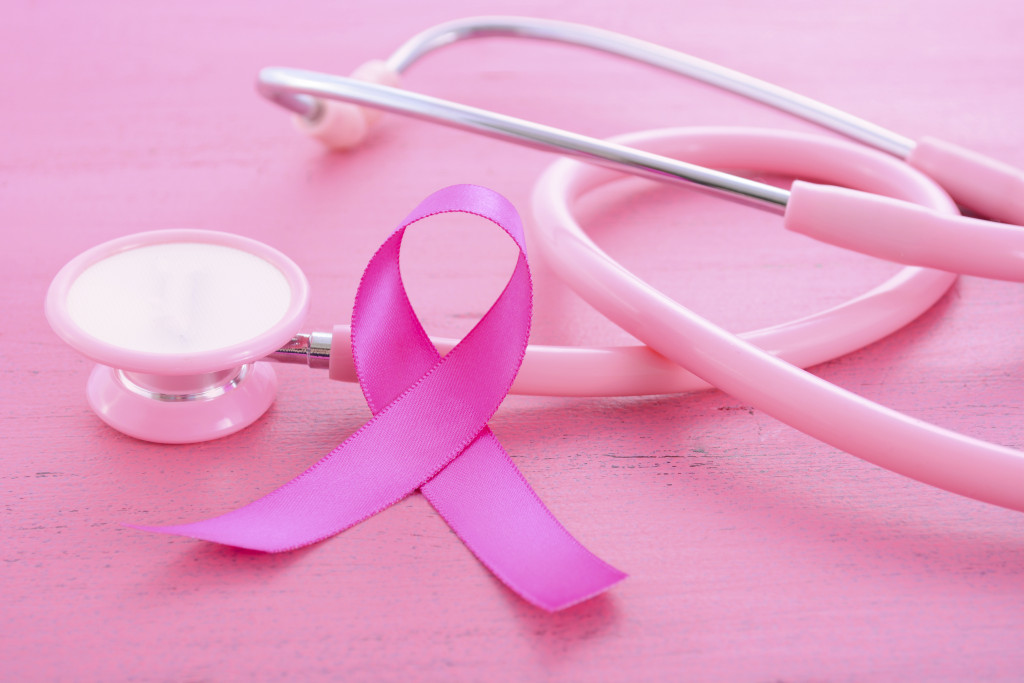Breast cancer affects one in eight women in the United States, and it’s important that if you notice any of these symptoms, you make sure to see your doctor. There are many types of breast cancer, but they all have some common symptoms. Some other causes of breast cancer can be exposure to radiation or toxic substances like arsenic.
These nine signs may not mean that you have breast cancer, but it is important to get checked out by a doctor if you experience any of them:
1. A Lump or Swelling in the Breast

One of the most common symptoms of breast cancer is a lump or thickening in one or both breasts. It’s also possible to feel a lump in your armpit, collarbone, upper chest, lower neck, and upper stomach area. It can be difficult to tell if you’re feeling a normal part of your body, such as lymph nodes close to your breast tissue. As such, it’s essential that you see your doctor if you notice any lumps, especially if they don’t go away within a few weeks. Your doctor might suggest getting a mammogram to ensure that you don’t have breast cancer.
2. Changes in Skin Around Your Nipple
Another possible symptom of breast cancer changes to the skin around your nipple, including it becoming puckered or dimpled, redness, or scaling. The skin around the nipple may also turn inward instead of outward. It’s rare to develop cancer in this area, but changes like these can be an indication of breast cancer.
3. Changes to Your Nipple
Changes to your nipple, including pulling or twisting it, crusting, or scaling, can be a sign of breast cancer (and other possible causes). One condition that shares some symptoms with breast cancer is Paget’s disease which usually affects only one nipple and is typically found in older women past menopause. However, both disorders are treated differently, so it’s essential that you see your doctor if you notice any changes to your nipples or discharge from the nipples as soon as possible.
4. Sores on Skin Around Breast Tissue
Skin sores on the chest wall or under the armpit can be a sign of breast cancer. The reason why it’s important to make sure you keep an eye out for any open sores is that occasionally breast cancer cells may spread (metastasize) and form tumors in other parts of your body, meaning that skin sores elsewhere could be a symptom of metastatic breast cancer.
5. Fluid Coming from Nipple
Breast Cancer can cause fluid to come from your nipple without squeezing it, although sometimes this is caused by non-cancerous conditions such as mastitis, which results when there is a blockage between your breasts and nipples. If you notice fluid coming from your nipple, pay attention to whether it’s bloody or green, or yellow, which can indicate infection. If you see bloody fluid, get in touch with your doctor to rule out breast cancer as soon as possible.
6. Painful Swelling of Both Breasts
Breast pain that’s associated with swelling is also one of the most common symptoms of breast cancer (along with a lump). It’s important to note that not all types of breast pain are signs of cancer; some less serious causes include mastitis and fibrocystic breasts. However, if you do experience persistent pain in both breasts, it’s advised that you see your doctor make sure everything’s alright.
7. Swelling in One Breast
Some types of breast cancer can cause one breast to swell or appear larger than the other, although this is only a symptom of cancer in very rare cases. However, if you notice swelling of just one breast, especially if it’s accompanied by hardening and the nipple turning inward, pay attention to any changes and see your doctor.
8. Itching in the Breast
Itching in your breast can also be a sign of breast cancer. It’s rare to experience itching in your breasts, and it’s often accompanied by other symptoms such as redness or scaling. This is because Breast Cancer tumors emit estrogen, which can cause skin cells to grow more rapidly, resulting in itchiness and other cellular changes near cancer.
9. Dimpling of the Skin
Breast Cancer can cause dimpling in your skin, particularly if it’s advanced. Tiny pockets cause the dimples in your skin where tumor cells had died and also where lymph nodes used to be before they were taken out by surgery. Because the tumor cells emit estrogen that makes skin more supple, early-stage breast cancer rarely causes dimples.
Breast cancer can be a life-threatening illness, but it’s essential to know the symptoms so you can get help as soon as possible. The nine breast cancer symptoms we’ve outlined in this article are not exhaustive, and there may be other signs that warrant your attention. Contact your doctor if you notice any changes to your breast or other symptoms that seem unusual.

